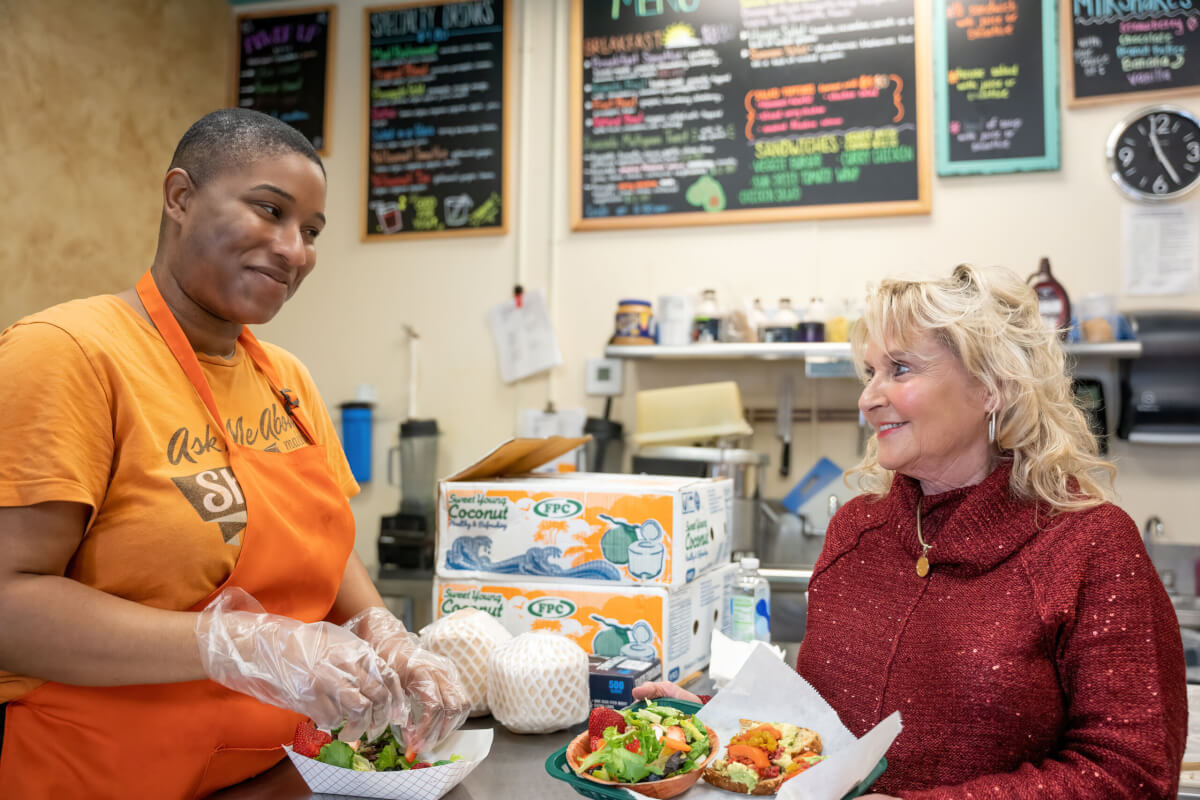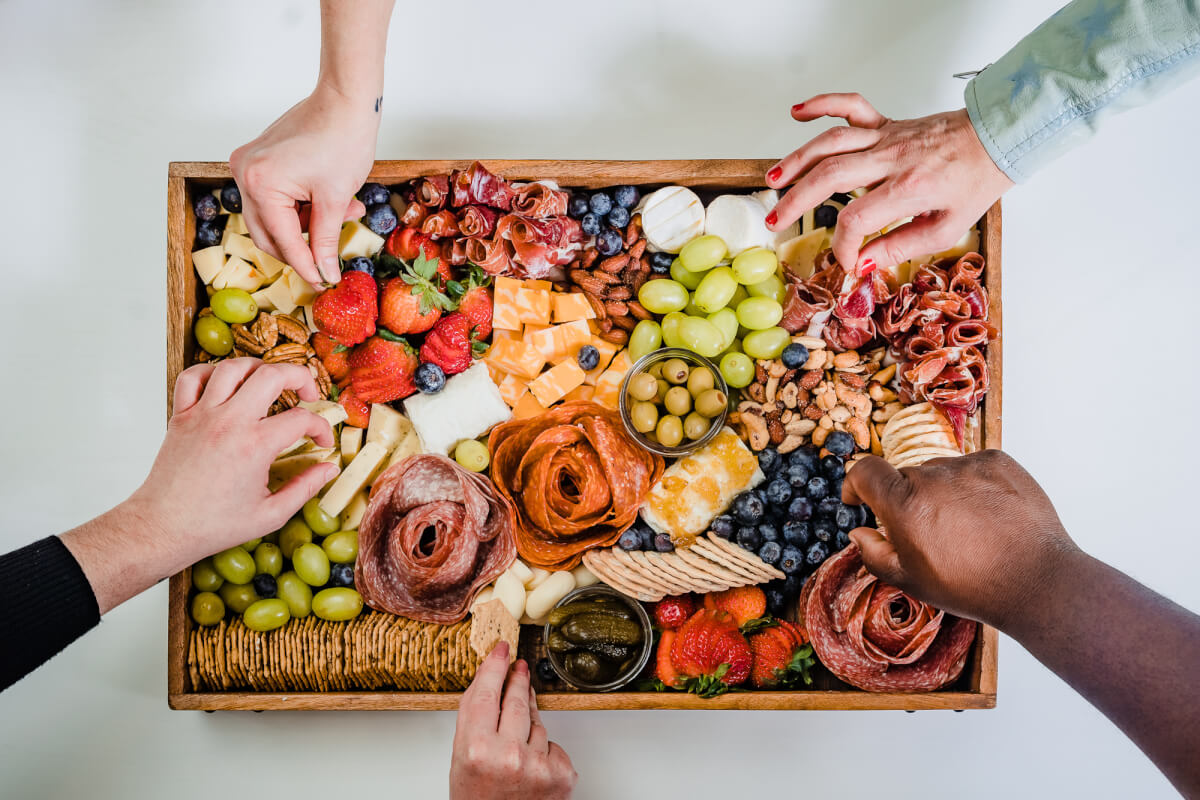
The world is your oyster
by Kathy Nolan
Photography by Paprika Southern and goldenisles.com
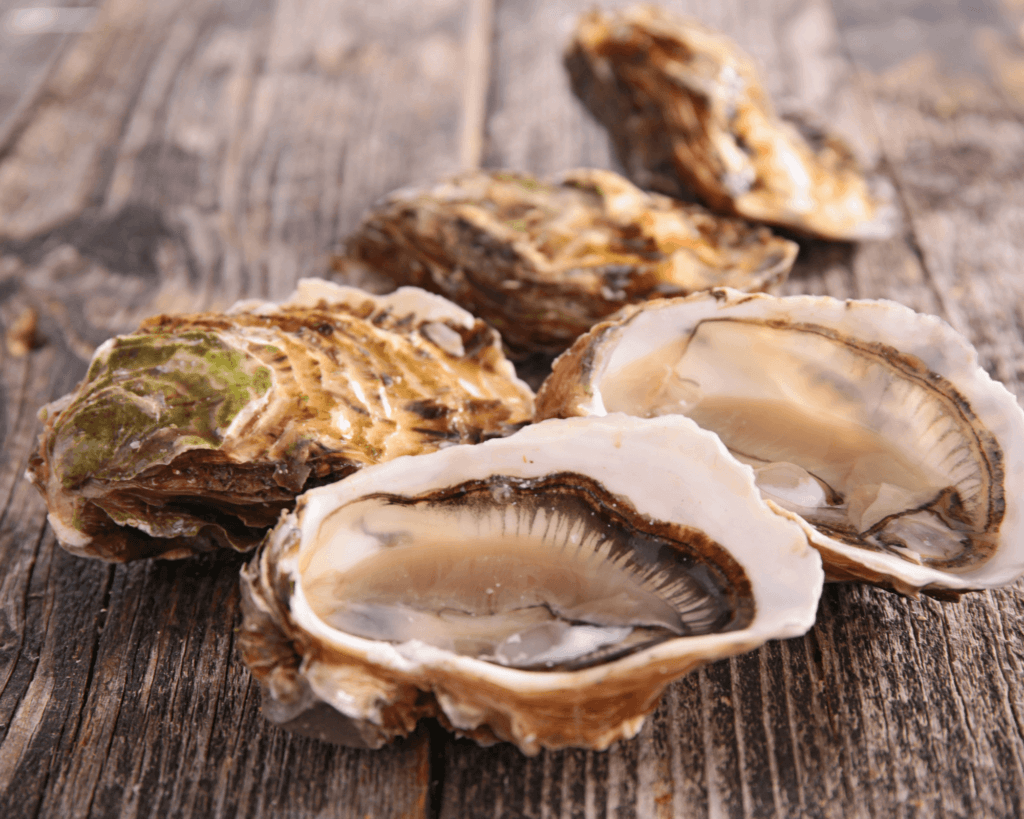
Grab a tire iron and seize the day!
Looking for a new coastal crop to harvest this fall? Georgia DNR’s Shellfish and Water Quality Unit Leader Dominic Guadagnoli has a few pearls of wisdom. Grab a five-gallon bucket, a pair of work gloves, waterproof boots, and a tire iron. Then, purchase an annual fishing license online from the Georgia Department of Natural Resources for $15, download a treasure map of oyster reefs, and head to the coast to start your adventure. The Georgia Coastal Division has online brochures with maps of public recreational shellfish harvest areas that are available in Camden, Glynn, Mcintosh, Liberty, and Chatham Counties.
In 1732, General James Oglethorpe and Georgia’s founding colonists found tidal shorelines covered with living oyster reefs. In the early 1900s, the state led the nation, harvesting 8 million pounds of oyster meat, primarily for the canning industry. Disease, loss of habitat, and overharvest dramatically lowered the abundance of oysters, but the slippery shellfish have endured. The last shucking houses in coastal Georgia closed in the 1960s. Conservation efforts are underway to rebuild Georgia’s oyster populations to historic levels.
The expanse of marshlands, tidal creeks, and sound systems that make up the Georgia coastline produce an abundance of seafood, including oysters. Georgia’s recreational oyster harvesting season began in November 2022 and continues through April 2023. Annual seasons vary based on the climate, so water temperatures are safely below 81 degrees. Oysters may only be harvested using handheld implements beginning half an hour before sunrise until 30 minutes after sunset.

Low tide is prime time.
Be prepared with long sleeves and pants to protect yourself from the sharp edges of the reefs. Arrive at low tide when the oysters are exposed and plan to “cull in place.” This means that you should remove small oysters from the cluster and leave the remaining shell material on the shoreline. This process provides additional habitat for future generations of oysters to grow. Mature oysters must measure at least three inches from hinge to mouth for harvest.
Each person can legally harvest up to two bushels of oysters per day. The average retail price per bushel of oysters is $65. (One bushel is approximately equal to 100 oysters or the contents of two five-gallon buckets.) The hardworking bucket also offers onsite support to pull your boots out of the muck! Each boat may haul in a total of six bushels of oysters per day for personal consumption. It is unlawful to sell any shellfish that was harvested for recreational purposes.
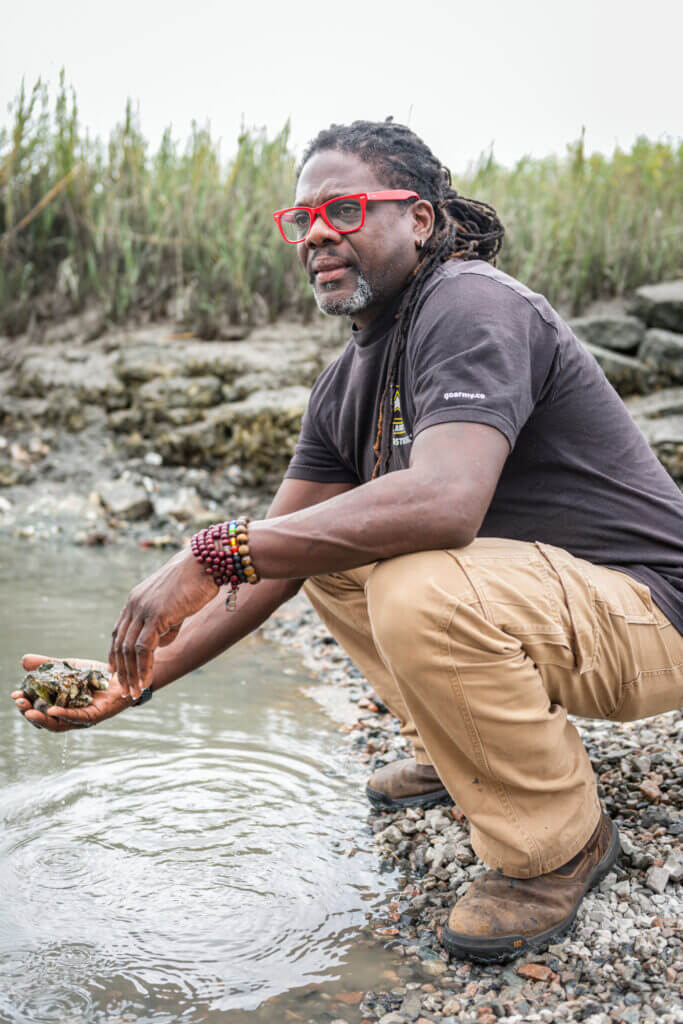
Haul in your harvest and reap the rewards.
Prepare a holiday feast featuring fresh Georgia oysters. Your turkey might just get a pardon when you serve fresh oyster dressing using a recipe created by Brunswick’s acclaimed CheFarmer. Matthew Raiford previously served as the Executive Chef of Haute Catering in Washington, D.C. at the House of Representatives. To enhance his already legendary culinary career, the James Beard-nominated, Black chef returned home to Georgia in 2010, continuing his family legacy by becoming a sixth-generation farmer in Brunswick, on ancestral land owned by his family since 1874.
“Growing up in Brunswick, Georgia, on our family farm was a very rewarding experience; everything seemed to be in abundance and always ready for us to eat and share with our family and community,” Raiford said. “To me, eating locally is connected to a sense of place and connected to your health; much like having a teaspoon of honey from the same location you live to keep allergies at bay, I believe that eating locally keeps you extremely healthy, and grounded in your family and community.”
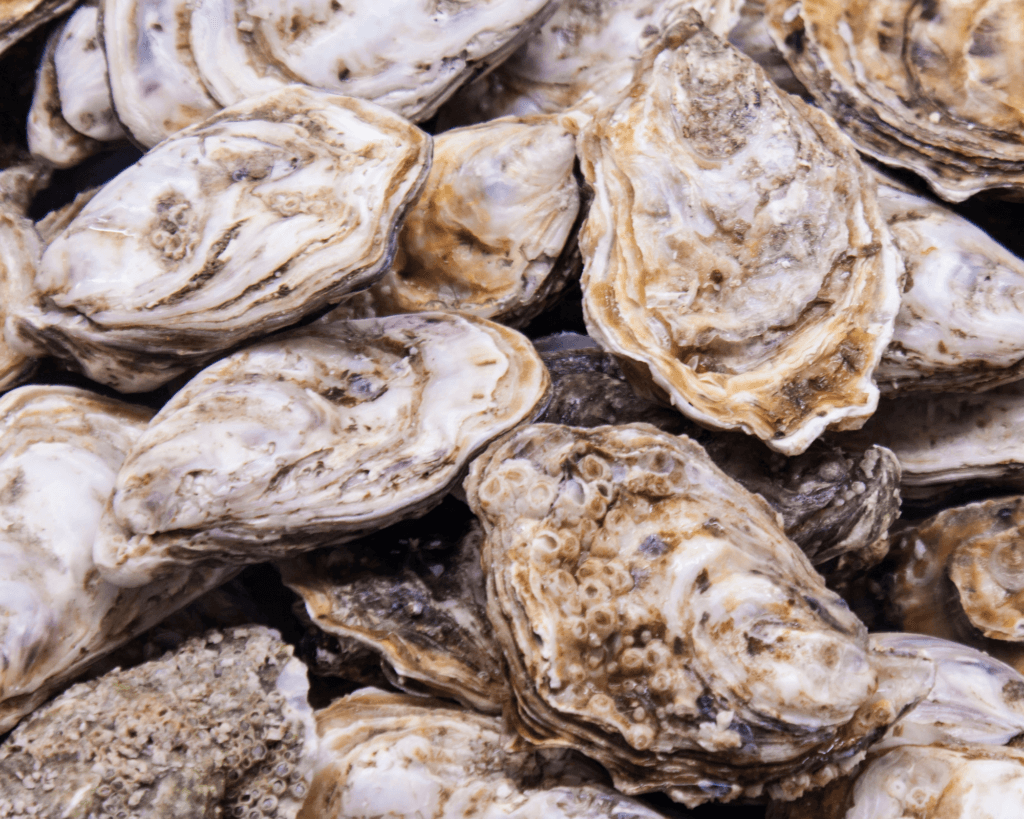
Remember to recycle your shells!
Create an oyster shell chandelier or simply return your empty shells to a recycling facility. Oyster reefs stabilize shorelines, protecting them from the erosive forces of tidal currents, wind-driven waves, and boat wakes. Reefs also provide a natural habitat for birds, mammals, crustaceans, and fish. Oyster recycling facilities are available at Coastal Resource Division Headquarters and Champney River Boat Ramp. Call (912) 264-7218 for additional information about shell recycling.
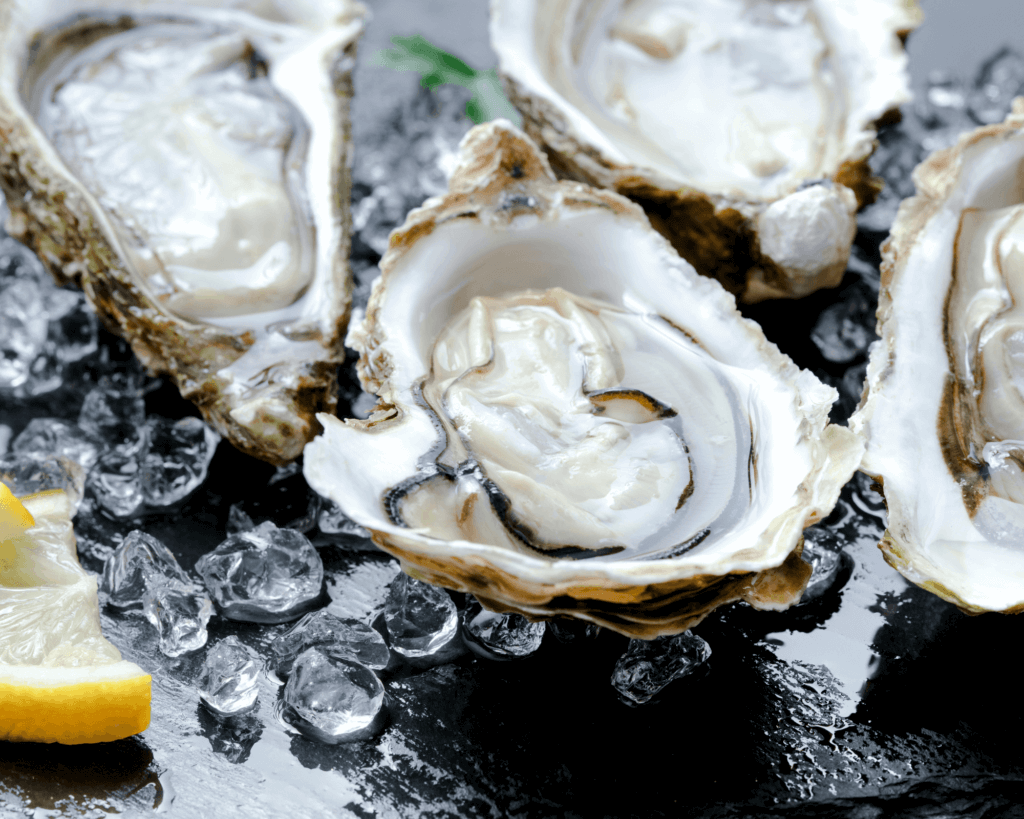
Matthew Raiford’s Holiday Recipe for Oyster Dressing (6 – 12 servings)
Ingredients
8 strips smoked bacon, chopped
1 cup sweet onion, diced small
1 cup red pepper, diced small
2 cups celery, diced small
12 large baked homemade or frozen biscuits
1 quart oysters and reserved oyster liquid
3 eggs
2 cups shrimp stock
2 sprigs of rosemary
2 tablespoons smoked paprika
1 tablespoon cayenne pepper
1 tablespoon black pepper
2 tablespoons salt, season to taste
Dash of nutmeg, optional
Directions
Preheat oven to 400 degrees.
Cook bacon over medium-high heat in cast iron. Then, chop into pieces and set aside.
Use bacon fat in same pan to cook sweet onion, red pepper, and celery. Turn off heat and let sauté for 4 to 5 minutes. Mixture will finish cooking in oven. Add rosemary sprigs to mixture.
Get a large bowl and break apart biscuits, which should amount to 7 cups of broken pieces. Add bacon to vegetable sauté mix. Stir to incorporate. In separate bowl, mix eggs and liquid reserved from oysters. Then incorporate into the dry mix.
Add in smoked paprika, cayenne pepper, black pepper, and salt. You can finish with a pinch of nutmeg, if you like. Mix well.
Pour in oysters and mix well to incorporate flavors. Pour 2 cups of shrimp stock and stir.
Mixture should be wet, but not soupy, with the consistency of a damp sponge. If too wet, add bread or biscuit chunks. If too dry, add more shrimp stock.
Pour mixture back into cast iron pan used earlier. Cook in oven for 30 minutes. Check to see if top is spongy. If too wet, continue to cook in 5 to 10 minute increments.
Take out of the oven, serve with your favorite sides, and enjoy!

Holiday Tips
• Too much mixture for one pan? No problem! Always make some for yourself on the side.
• Dressing is probably a bit more common these days because people do a lot of fried birds now. Thirty years ago, you wouldn’t find many fried turkeys, but now everyone does it!
• For those that prefer stuffing instead of dressing, make sure you insert the temperature gauge into the stuffing, not the bird, when checking to see if the dish is ready.
• Grab a few stalks of rosemary, instead of sage, to pair nicely with bacon.
• Drying rosemary can take as long as a month, but you can pull from it anytime you need. We grow rosemary at the farm. What we do with the rosemary is bundle it and hang it, and let it dry here in the restaurant.
• Clean up as you cook. With this recipe, the cast iron is used in multiple steps to avoid using too many dishes.




